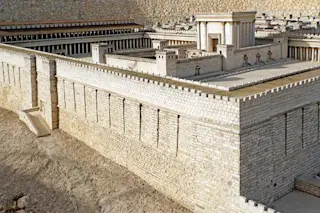(Inside Science) — In the 6th century B.C., the Babylonian king Nebuchadnezzar II, fearful that the Egyptians would cut off the Babylonian trade routes to the eastern Mediterranean region known as the Levant, invaded and laid siege to Jerusalem to block them. His army destroyed the temple the Hebrew king Solomon built there, and forced the city’s elite to exile in Babylonia.
So began the Babylonian Exile or Captivity, an event that shaped modern Judaism. A new archaeological discovery puts a rare physical stamp of authenticity on an event described in the Hebrew Bible.
Israeli and American archaeologists have found evidence just outside Jerusalem’s old city that apparently supports the Biblical description. In an area called Mt. Zion, which is also known as Western Hill, they found the remains of a home of someone the Bible calls a “Big Man,” one of those probably sent to exile. He would have ...














